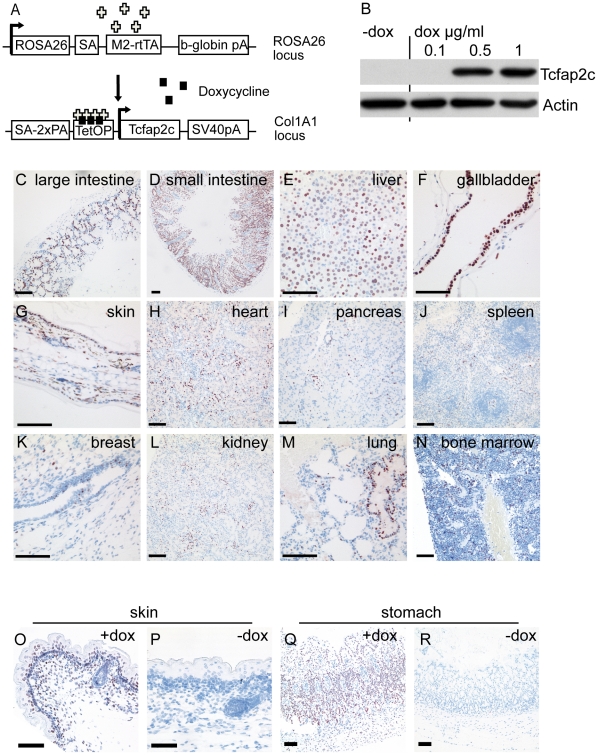Figure 1. Generation of iTcfap2c-mice.
Schematic representation of transgenes used to produce Tcfap2c-inducible ES cells and mice. ES cells containing M2-rtTA expressed under control of the Rosa26 promoter were retargeted at the 3′ UTR of the Col1a1 locus by insertion of the murine Tcfap2c-cDNA under control of the tetracycline responsive element (TetOP) (pA, polyadenylation signal). (B) Western blot analysis of doxycyline (dox) dependent Tcfap2c induction in transgenic ES cells. (C–N) Immunohistochemical detection of Tcfap2c protein on sections from iTcfap2c-mice after dox-induction. Lack of Tcfap2c expression in untreated iTcfap2c mice in skin (P) and stomach (R) compared to dox induced iTcfap2c tissue (O,Q). Scale bars = 100 µm.

